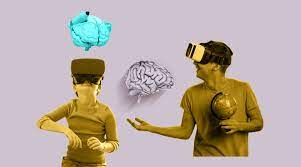
Websites
Virtual Classroom
- Virtual Classroom Platform: Enhancing Education through Real-time Online Interac
Virtual Classroom
Virtual Classroom is a web-based platform that provides a virtual environment for students and educators to connect, communicate, and educate. It is designed to replicate the traditional classroom experience in a digital setting, allowing students and educators to interact and engage with each other in real time from anywhere in the world.

Key Features:
- Video Conferencing: Virtual Classroom provides a video conferencing feature that allows educators to conduct live classes, seminars, and webinars with students. They can share their screens, presentations, and documents in real-time and interact with students using chat, voice, and video.
- Interactive Whiteboard: Virtual Classroom has an interactive whiteboard that allows educators to explain concepts, draw diagrams, and write notes using a digital pen or mouse. Students can also use the whiteboard to collaborate with their peers, ask questions, and contribute to the discussion.
- Learning Management System: Virtual Classroom comes with a built-in Learning Management System (LMS) that allows educators to create, organize, and deliver course content, assignments, and assessments to students. Students can access the LMS from their devices and view the course materials, submit assignments, and take quizzes and tests.
- Breakout Rooms: Virtual Classroom provides breakout rooms that allow educators to divide students into smaller groups for collaborative activities and discussions. They can assign different tasks or projects to each group and monitor their progress.
- Attendance and Performance Tracking: Virtual Classroom has an attendance and performance tracking feature that allows educators to monitor and track student attendance, participation, and performance. They can generate reports and analytics to assess the effectiveness of their teaching methods and make data-driven decisions.

How it works:
To use Virtual Classroom, educators and students need to create an account and log in to the platform. Once they are logged in, educators can create courses, schedule classes, and invite students to join. Students can access the courses and classes from their devices and participate in the activities and discussions.
During a live class, educators can use the video conferencing feature to present their material, interact with students, and answer questions. They can also use the interactive whiteboard to explain concepts, draw diagrams, and write notes. Students can collaborate with their peers using the chat feature and contribute to the discussion.

After the class, educators can use the LMS to assign homework, projects, and assessments to students. Students can access the LMS from their devices and view the course materials, submit assignments, and take quizzes and tests. Educators can monitor and track student performance using the attendance and performance tracking feature and make data-driven decisions to improve their teaching methods.

Overall, Virtual Classroom is a powerful platform that transforms how educators connect, communicate, and educate. Its video conferencing, interactive whiteboard, LMS, breakout rooms, and attendance and performance tracking features make it a comprehensive tool for online teaching and learning.








